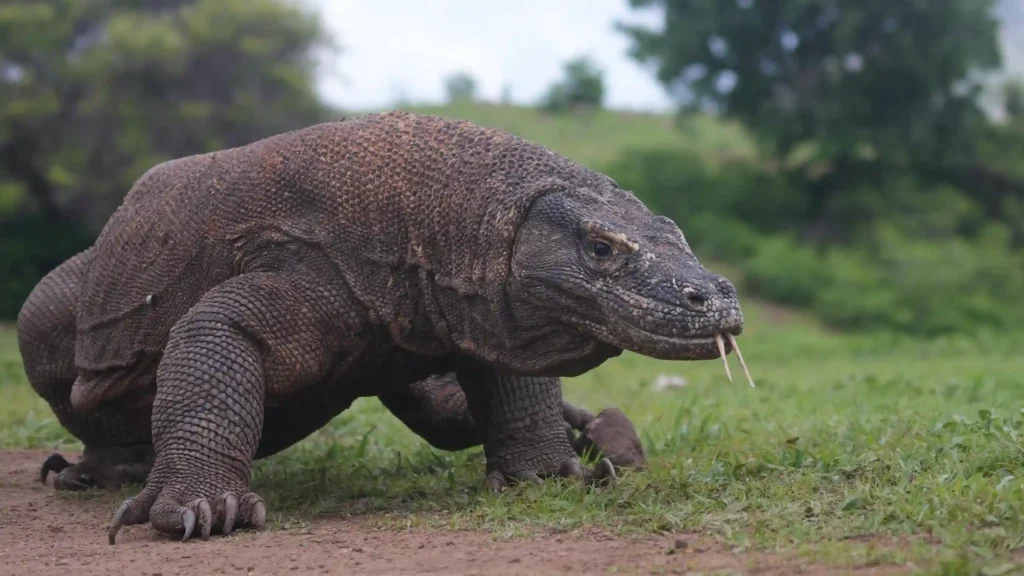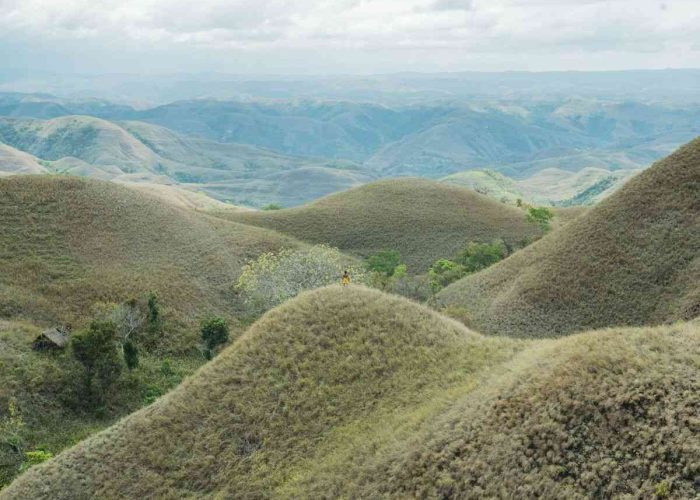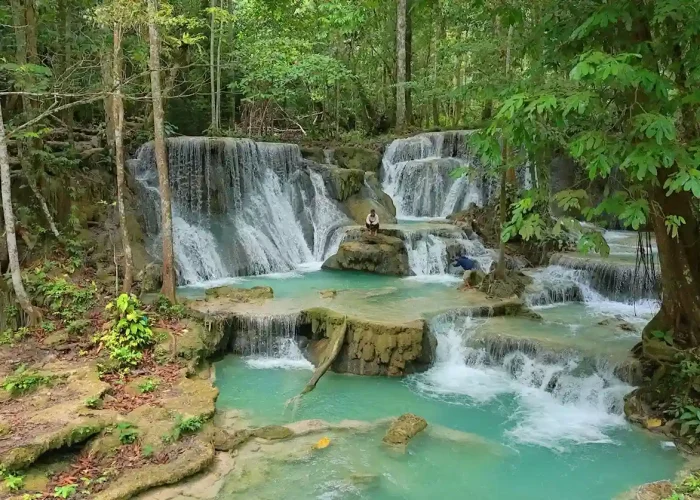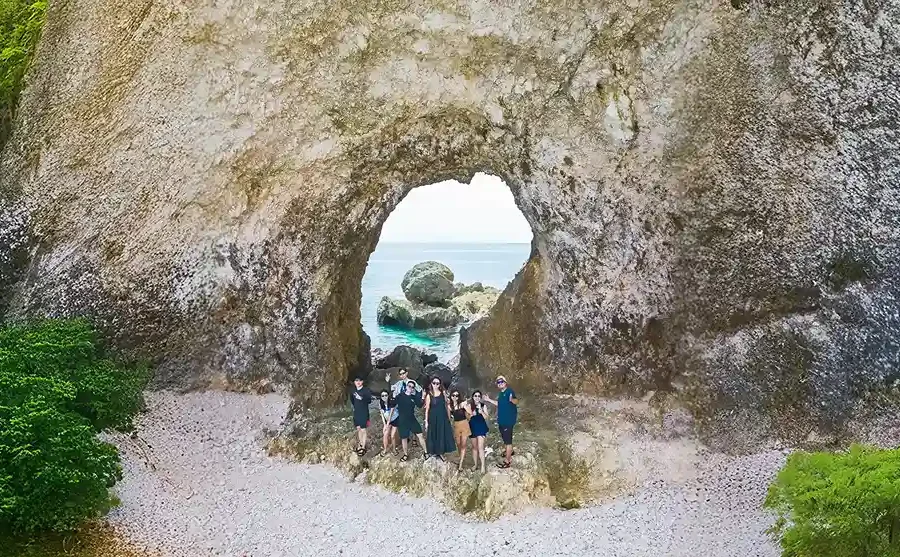If you’ve ever seen photos or videos of Komodo dragons, you’ll probably agree that the most fascinating part of this ancient reptile is its long, yellowish, forked tongue. At first glance, it might look a little scary, but behind this unique shape lies an incredible secret about how Komodo dragons survive in the wild.
So, why do Komodo dragons have a forked tongue? Is it simply an evolutionary trait, or does it serve an important role that helps these ancient lizards remain apex predators in their natural habitat? In this article, you’ll discover the scientific explanation and interesting facts about the Komodo dragon’s forked tongue, from its role in daily life to how it supports their hunting strategies.
Table of Contents
Basic Facts About Komodo Dragons

Before we dive deeper into the forked tongue, let’s get to know this remarkable creature a little better. The Komodo dragon, scientifically known as Varanus komodoensis, is the largest living lizard on Earth. These reptiles can grow up to 3 meters long and weigh more than 70 kilograms. With such massive size, it’s no wonder people often refer to them as “the ancient dragons of Indonesia.”
Komodo dragons can only be found in a few islands of East Nusa Tenggara, Komodo Island, Rinca, Gili Motang, and parts of Flores. As apex predators, they have no natural enemies in their environment, making them the rulers of their food chain. Aside from their sharp teeth, strong tails, and venomous saliva rich in bacteria, what truly makes them extraordinary is their forked tongue, which is their ultimate tool for detecting prey.
Why Do Komodo Dragons Have a Forked Tongue?
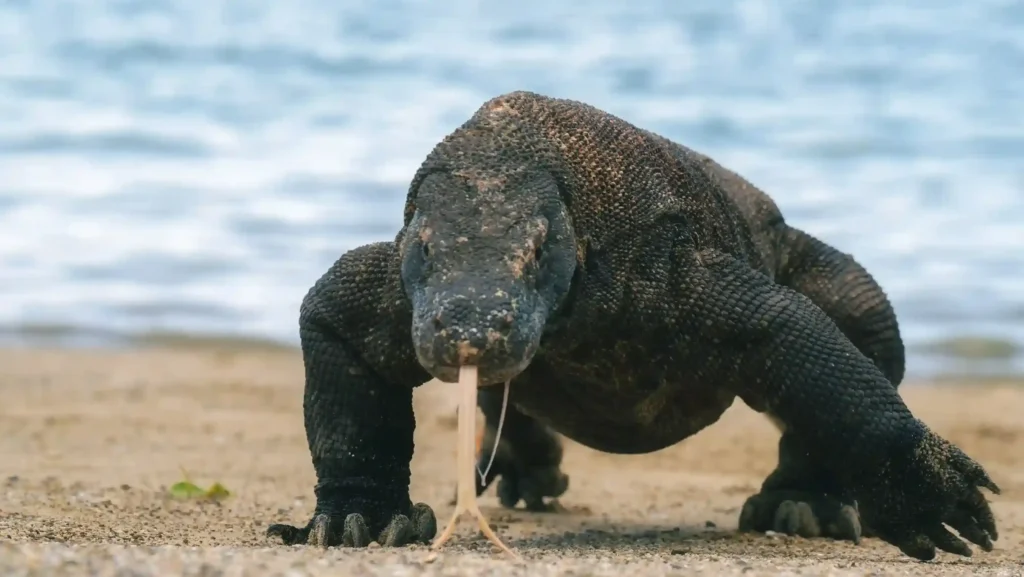
The main reason Komodo dragons have a forked tongue is that this shape allows them to detect the direction of scents with incredible accuracy. Much like snakes, Komodo dragons possess a special sensory organ called the Jacobson’s organ or vomero-nasal organ, located on the roof of their mouth. This organ acts as a chemical sensor that interprets airborne particles.
Every time a Komodo dragon flicks its tongue, the two forked tips collect scent particles from the surrounding air. These signals are then sent to the Jacobson’s organ for analysis. As a result, the dragon can determine whether the smell comes from prey, carrion, or even potential threats nearby. Thanks to this forked design, they can pinpoint the exact direction of the odor source.
Even more fascinating, Komodo dragons can detect the smell of blood or carrion from as far as 5–10 kilometers away. Imagine how essential this forked tongue is for their survival in the wild. Without this unique organ, they might not have remained the top predators of Komodo National Park.
The Function of a Forked Tongue in a Komodo Dragon’s Life
A forked tongue isn’t just for tasting, it’s a vital part of the Komodo dragon’s natural navigation system. Its primary role is to help them interact with and understand their environment. Here are some key functions of the forked tongue in their daily life:
- Enhances Their Sense of Smell
The forked tongue provides more detailed scent information, giving Komodo dragons a far sharper sense of smell compared to most land animals. - Collects Sensory Data
Working like an antenna, the tongue gathers chemical data from both air and ground. This information helps the dragon assess its surroundings, from locating prey to identifying possible threats. - Detects Food
Komodo dragons can distinguish whether a scent comes from fresh carrion, a living animal, or another source. - Determines Direction Accurately
With the two forked tips working independently, they can figure out the exact direction of the odor. This allows them to head straight toward the source without wandering. - Reads Chemical Trails
Other animals often leave scent trails as they move. Komodo dragons use their forked tongue to read and follow these chemical tracks. - Helps Avoid Danger
It’s not just prey they detect, Komodo dragons can also sense unusual or foreign scents, allowing them to avoid danger in the wild.
In short, the forked tongue is the dragon’s primary sensory tool. Without it, they would struggle to hunt or survive in the challenging environment of the islands.
Read more: What Do Komodo Dragons Eat? Fascinating Facts About Apex Predators in Labuan Bajo!
The Connection Between the Forked Tongue and Hunting
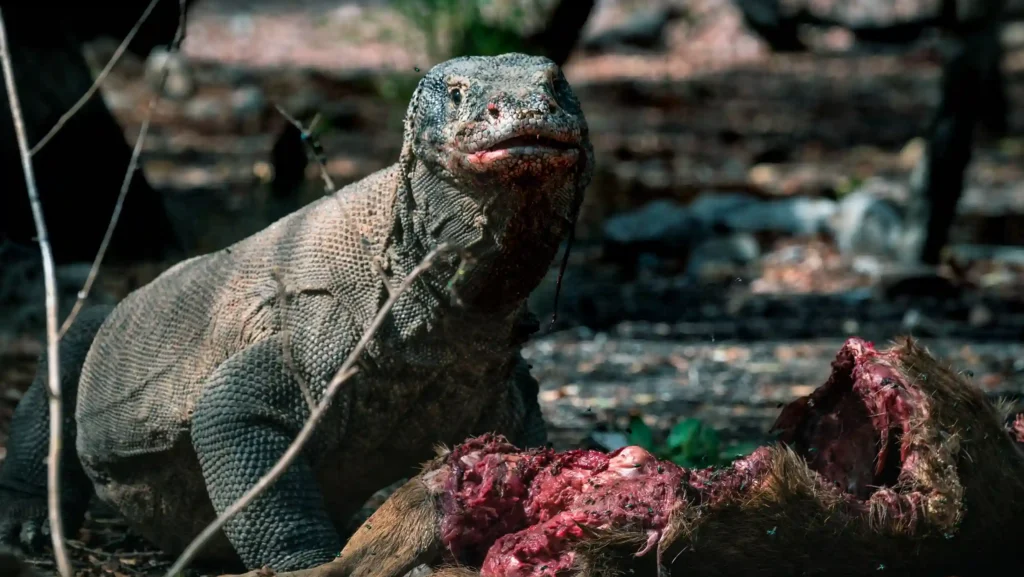
Komodo dragons are known as opportunistic predators. This means they hunt live prey but also scavenge carrion, which requires less effort. This is exactly where the forked tongue becomes invaluable.
During a hunt, a Komodo dragon flicks its tongue to detect the scent of blood or flesh. From this analysis, it can determine the direction of its target. The dragon then moves steadily closer until the moment is right. If the prey is alive, it delivers a powerful, venomous bite. Even if the prey manages to escape, the dragon can track it for kilometers, following the trail of blood with its forked tongue until the animal eventually collapses.
This strategy makes Komodo dragons highly efficient hunters. They don’t need to chase prey over long distances, just rely on their forked tongue function to track it down. This is one of the key reasons they have thrived as apex predators for millions of years.
Unique Facts About Komodo Dragon Tongues
Beyond their biological function, the Komodo dragon’s forked tongue also comes with some fascinating characteristics. These details make the species even more extraordinary:
- Their Tongue is Pale Yellow
Unlike most animals, the Komodo dragon’s tongue is pale yellow, making it stand out when flicked and more effective at capturing scent particles. - They Flick Their Tongue Dozens of Times per Minute
During a hunt, Komodo dragons can flick their tongue repeatedly, collecting a huge amount of scent data in a short time. - The Sensitivity is Extremely High
Their forked tongue can detect even the faintest odors, ensuring they never miss potential food sources. - It Works All the Time
Even when not hunting, the tongue constantly scans the environment, acting like a living radar for threats and opportunities. - They Detect Scents from Miles Away
Komodo dragons can smell blood from up to 5–10 kilometers, one of the longest ranges among large reptiles.
Read more: Tips for Seeing Komodo Dragons Safely During Your Labuan Bajo Trip
Let’s See Komodo Dragons in Their Natural Habitat with IndonesiaJuara Trip!
Now that you know why Komodo dragons have a forked tongue and how crucial it is for their survival, you’re probably eager to witness it firsthand. The great news is, you can! The best place to see this behavior in action is in Komodo National Park, the only natural habitat of these magnificent creatures.
With IndonesiaJuara Trip, you can join a Labuan Bajo Tour that takes you straight into the dragon’s territory. Guided by experienced rangers, you’ll not only stay safe but also learn fascinating insights about Komodo dragon behavior. Just imagine watching a dragon walk slowly, its forked tongue flicking in and out, realizing you’re face-to-face with one of the world’s most unique animals.
And your adventure doesn’t stop there. With IndonesiaJuara Trip, you can also trek the stunning landscapes of Padar Island, snorkel at the famous Pink Beach, or watch the magical sunset at Kalong Island. It’s not just about learning more Komodo dragon facts, but also enjoying an unforgettable journey in one of Indonesia’s most breathtaking destinations.


